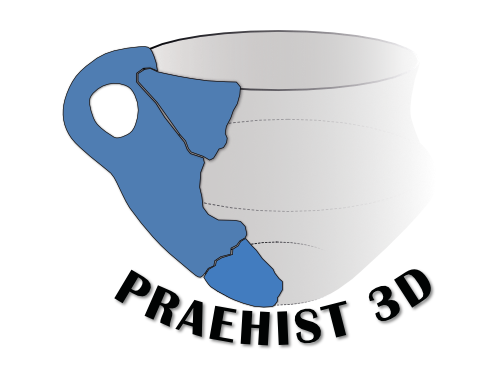Reconstructions in archaeology
Every idea in the general public, there is about life in the past, is characterized by reconstructed images of excavated finds and features as well as historic heritage. Original finds and uncovered ruins gave an impression of the past, but only so called lifelike reconstructions give the viewer a comprehensive insight into the relationships between findings and results.
So reconstructions and additions are necessary, as most finds are not completely preserved or strongly differ by storage-related processes from their original appearance.
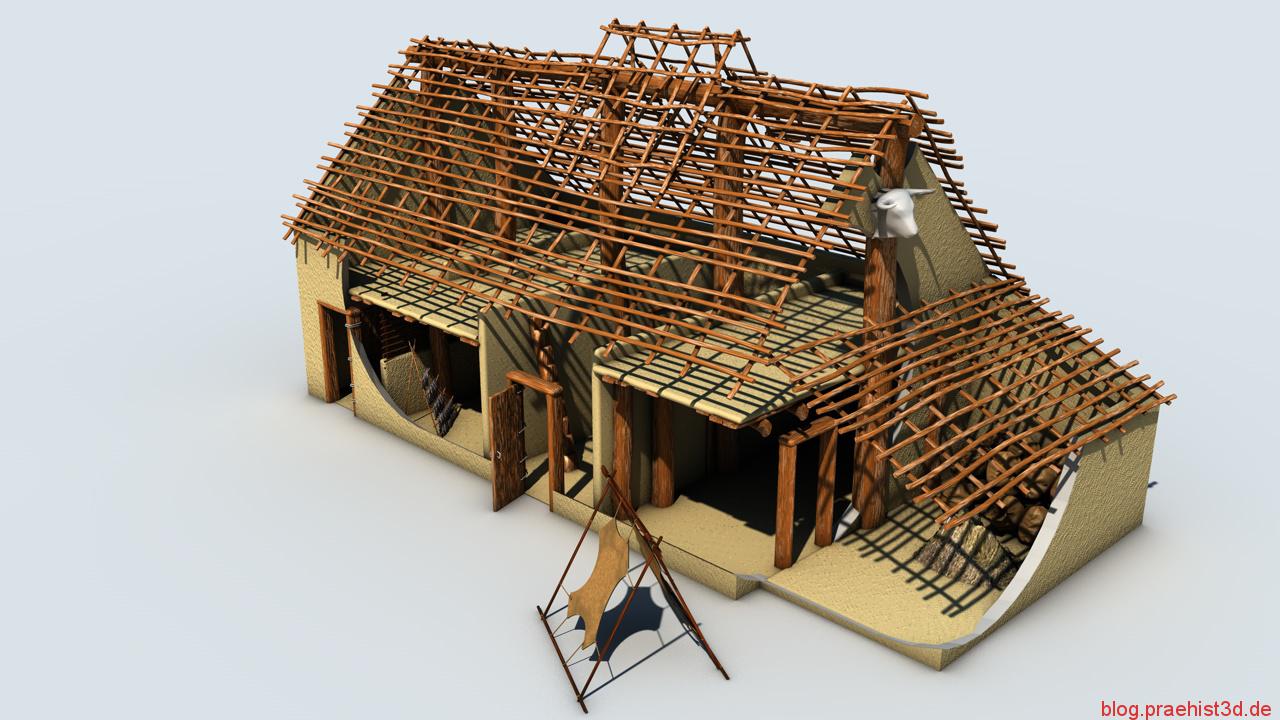
Lakeshore settlements
With the onset of the investigations at the area of Lake Constance, in the early 20th c., the image of water built platforms in the middle of the lake were established as historic truth. This interpretation was based on the thousands of posts that were located in the Lake under water. The investigation of this post was made possible by a slowly sinking water levels.
The first reconstructions by Hans Reinerth showed large built-up platforms in the middle of the lake, which were romantically set between turbulent waters in the sunset. Key factors in this was the penchant for romanticizing ancient representations. Also drawings of buildings from Asian colonies may have contributed a good deal, to this idea.
Today, these reconstructions are refuted largely scientifically. So the posts of the buildings were indeed found in modern lakes, where the preservation conditions were very good, but may have originally located on buildings in the area of the dry shore. The prominent construction served with seasonal high water to back up the home, so there was only a short time of the year in the water.
The Power of Images
The change of scientific views and interpretations over time, is part of the scientific discourse and absolutly normal. In the same way reconstructions undergo some serious change too. Unfortunately the change of already published reconstructions afterwards is not possible.
Since it is this life pictures how have a large impression on the viewer, it is difficult to exchange misleading older images with newer ones. Thus, the unscientific “horned viking helmet” for many people were absolutely natural for a long time. Although they are not based on research but pure fantasy, but gave the Northmen a wonderfully cruel appearance.
Images like this are quickly seared into the general perception but difficult to remove from it. Herein lies the real criticism of reconstructions compared to pure finding documentation.
Reconstructions always consist of several components:
- Scientific research
- Related supplements based on logic and z. B. Static relevant requirements
- Experiences and aesthetic ideasfrom whom undertakes the reconstruction.
- Zeitgeist
Since many of these aspects are no hard facts, every life image is always a compromise between sober research and consumer expectations of the recipients.
Fundamentals of house reconstruction
The presented reconstruction I made for a long night of science at the Free University of Berlin. It is based on real excavation data, but I will not mention the direct localization. Although the data base is relatively good, from an archaeological perspective, a many aspects of the following images are strongly hypothetical or the original findings shown greatly complements.
Degree of conservation and excavation method (starting material reconstruction)
Due to the special structure of the tell settlement belonging to the house, and the excellent preservation of burned architectural elements, it was possible to document the first floor of the house completely . The results and findings were documented in three dimensions with the total station, and additionaly recorded using photogrammetry for the different layers. Through this methodology could be dug independently of ground level and profile for natural layers.
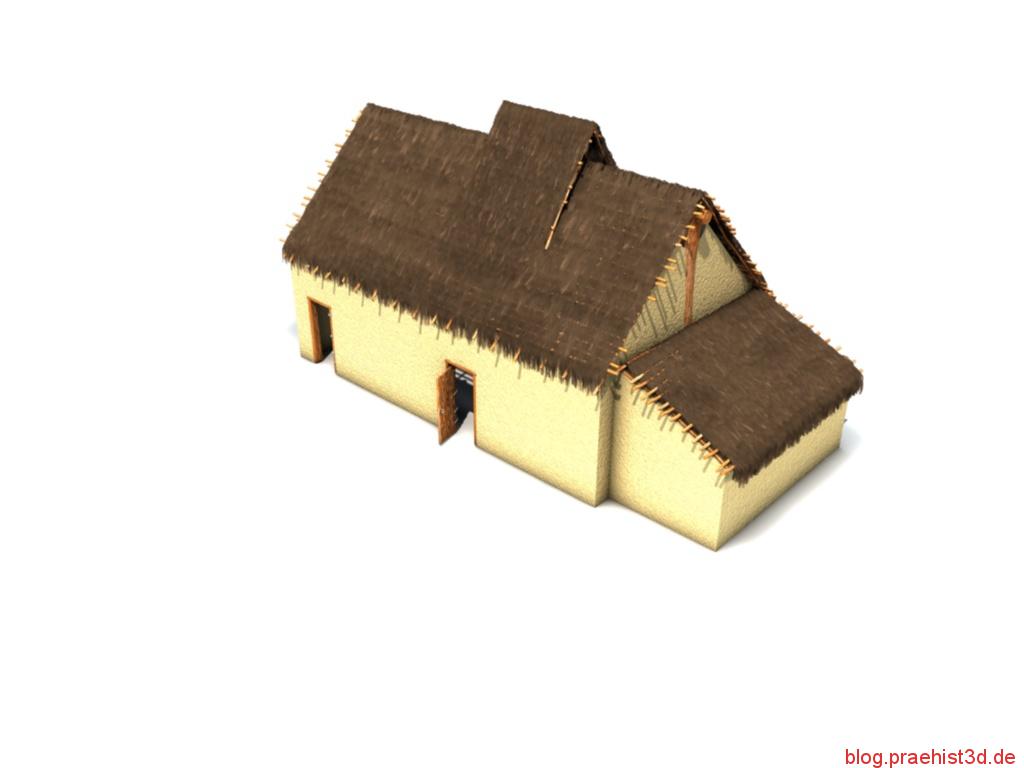
There was a two-piece floor which was separated by a „corridor“ on the ground floor of one another. The final event of fire that eventually destroyed the building, charred this ground. Although the first level broke in the collapse of the building , it could be fully documented. It consisted of splitting wood, which were designed boards like and were then passed with clay. Although these woods burned but their imprints are preserved. He also serves as a locking layer, seperating the findings from the first floor and the ground floor. Among them were a greater amount of weaving weights and a pedestal.
After the removal of the first floor, the finds of ground floor were unearthed. These were ceramics for the most part. The floor of the ground floor consisted of a layer of stamped clay which also got charred at the top. It was pierced by the roof-supporting posts. Also partitions were found on the ground floor, which have been documented yet slightly rising. They were accompanied by smaller post.
All of the obtained commencement are shown in the animation below in red.
Amendments and interpretation
Except for the above findings, the building was heavily supplemented. Thus, the location as well as formation of the doors is a pure assumption due to the internal structure of the building. The height of the basement about 2.1 m was chosen freely by me. This provides a good amount, which allows poeple to stand upright and should have given the possible herds in the basement, vents that directs the smoke halfway into the hallway.
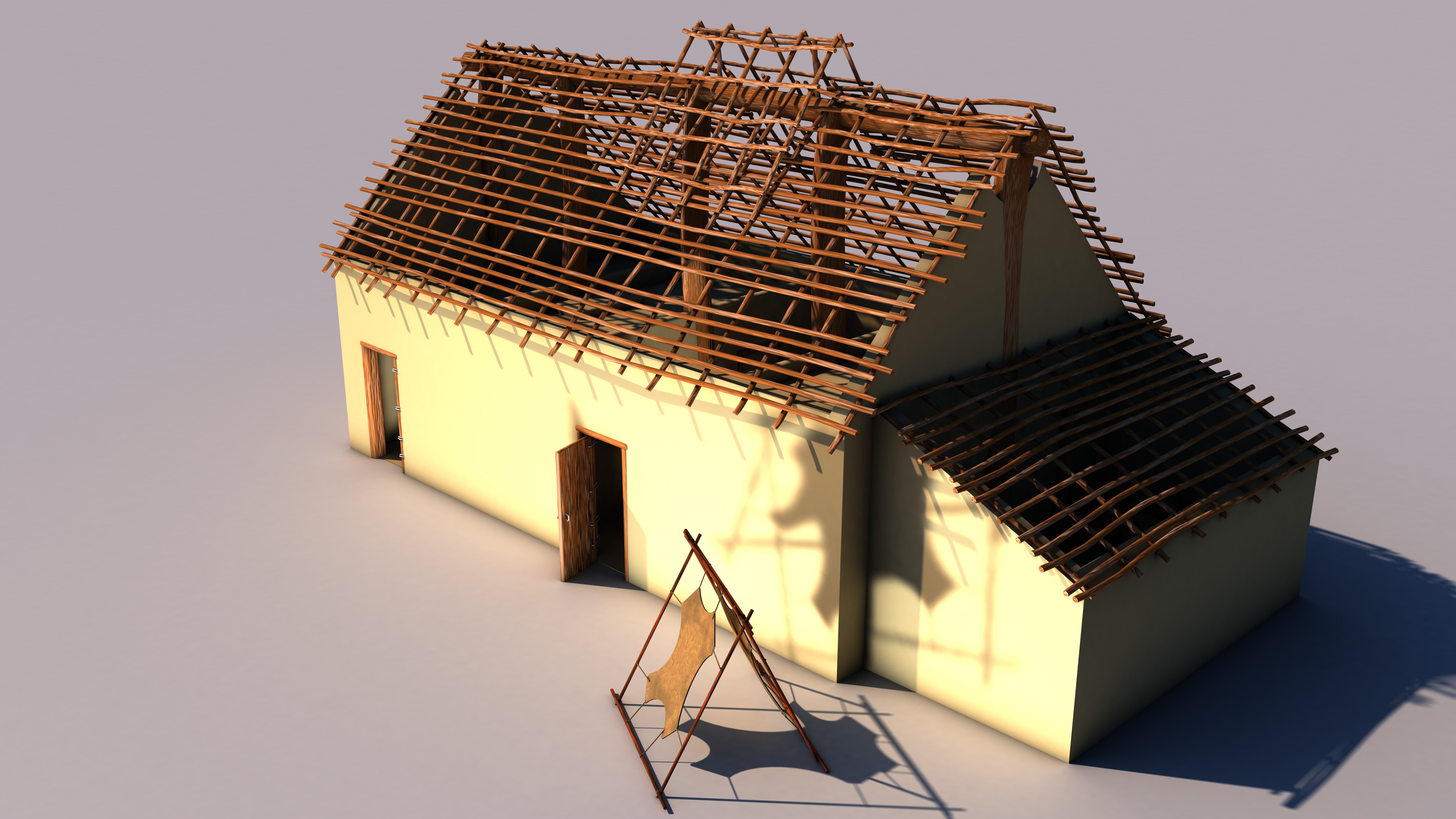
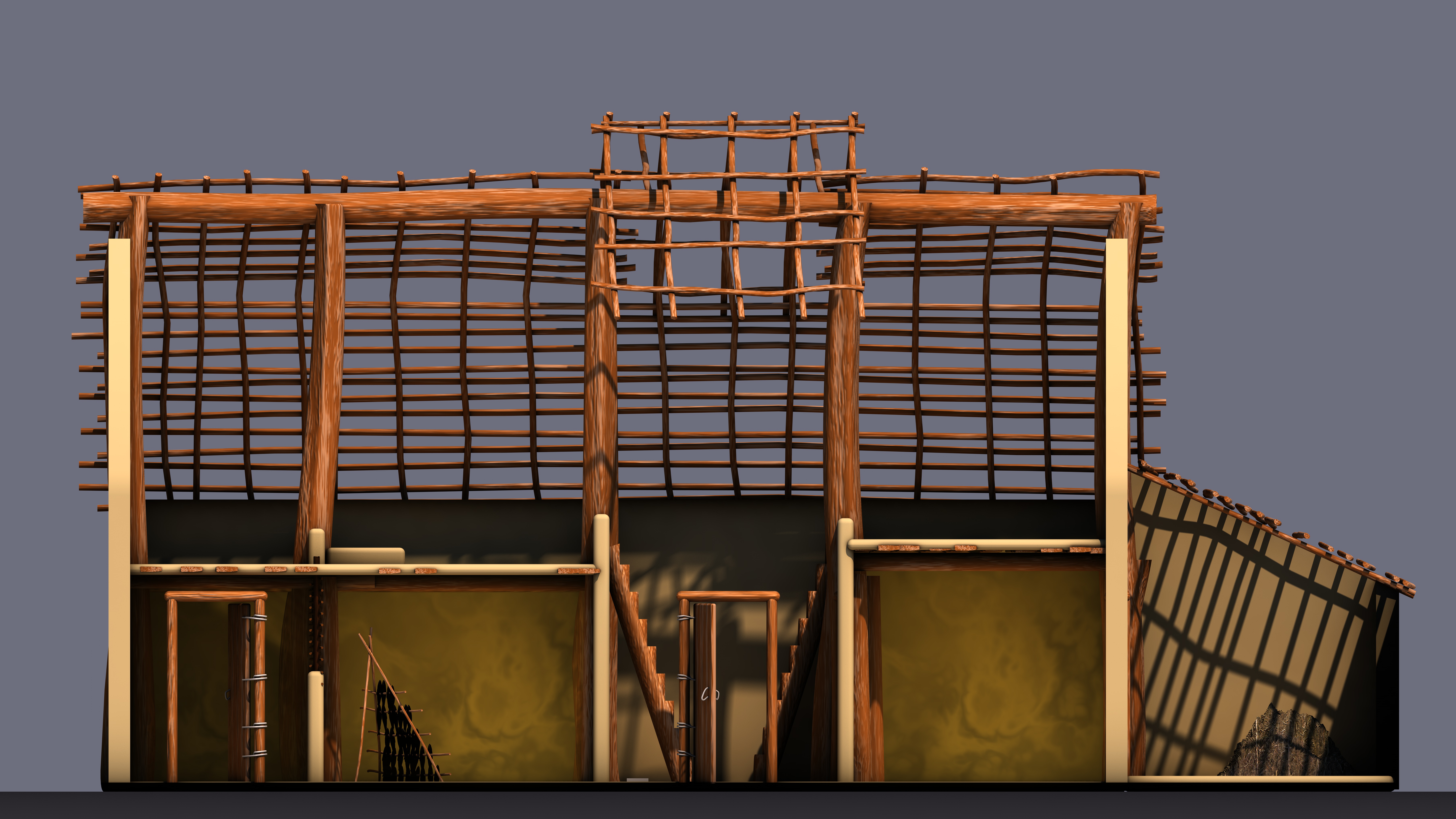
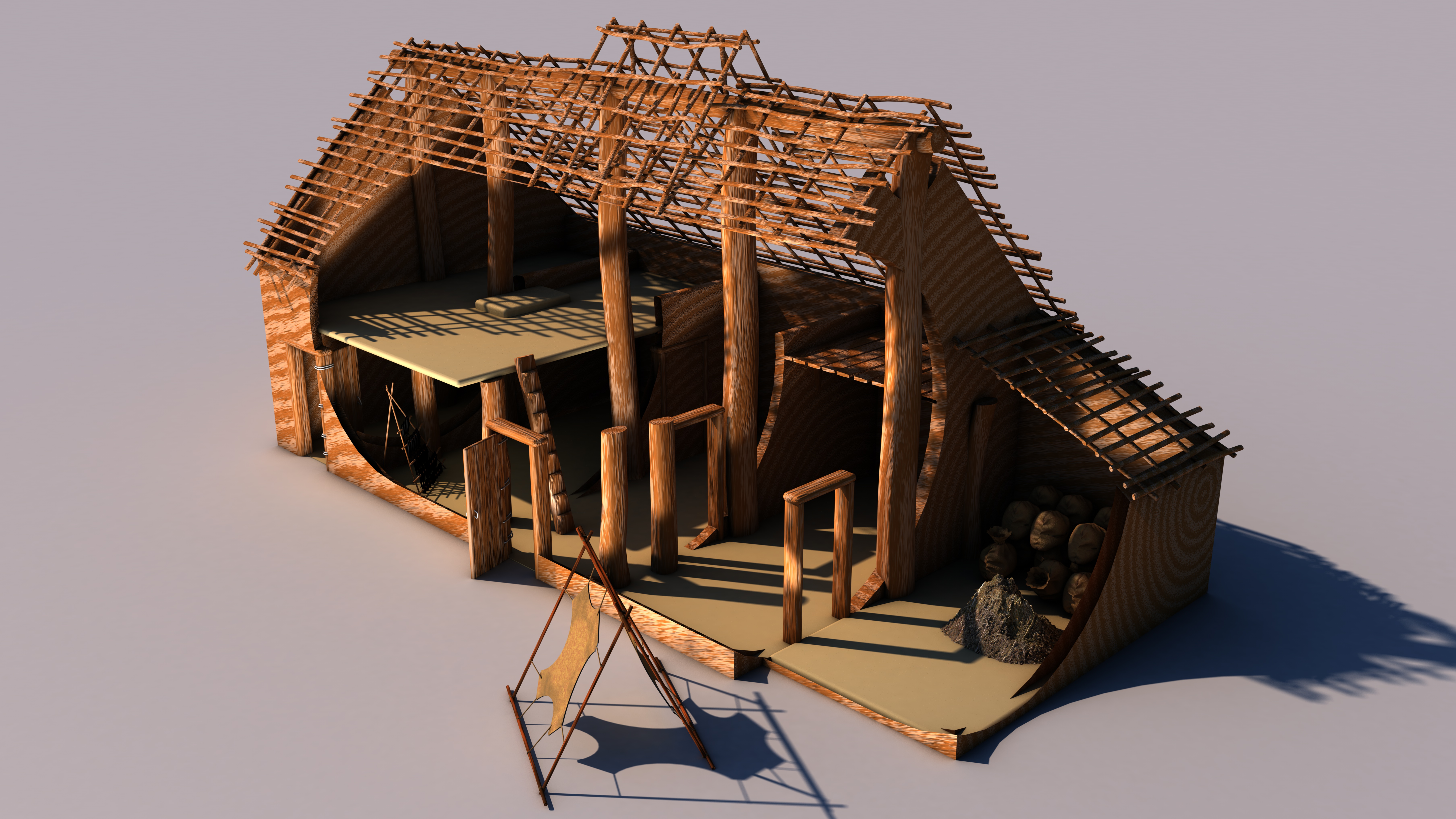
The upper floor has a wall height of about one meter, because the overlying roof guarantees the standing height. From the hall access was presented as possible by two climbing trees. Although these were not found, they make the simplest way to reach an upper floor, is. Also would be conceivable, ladders, rope ladders, ropes.
The loom weights from the floor were added to a simple loom. This need not be so necessarily been the case since the weights could only be stored upstairs.
All other inventory is based on assumptions and fantasy. The vessels are reconstructed while using real finds, but their location is hypothetical. Also purely hypothetical are the bundle of cloth, fur bags, nets, traps and tools. While it is to be assumed that something similar existed but the form, amount and location are unclear.
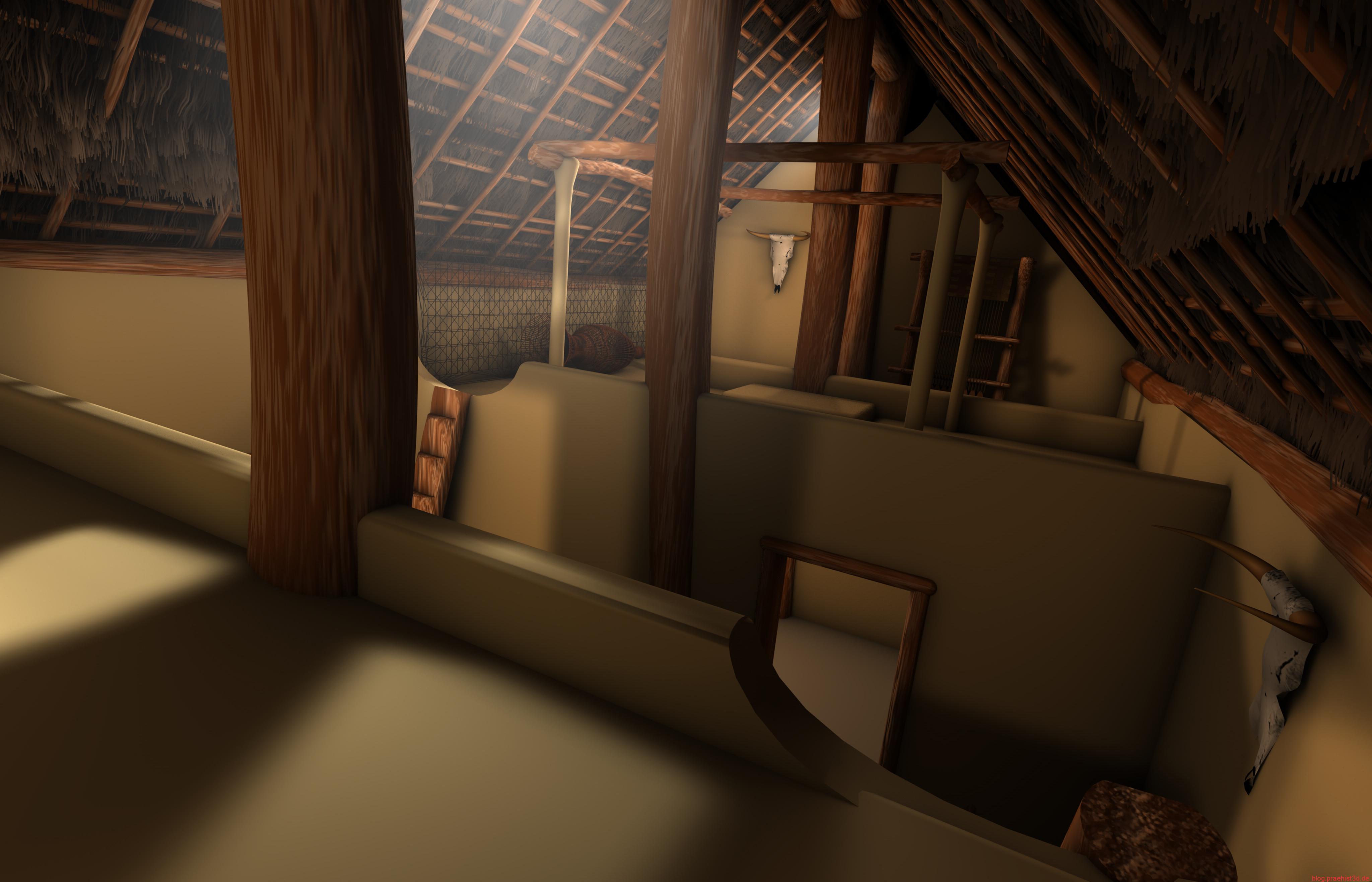
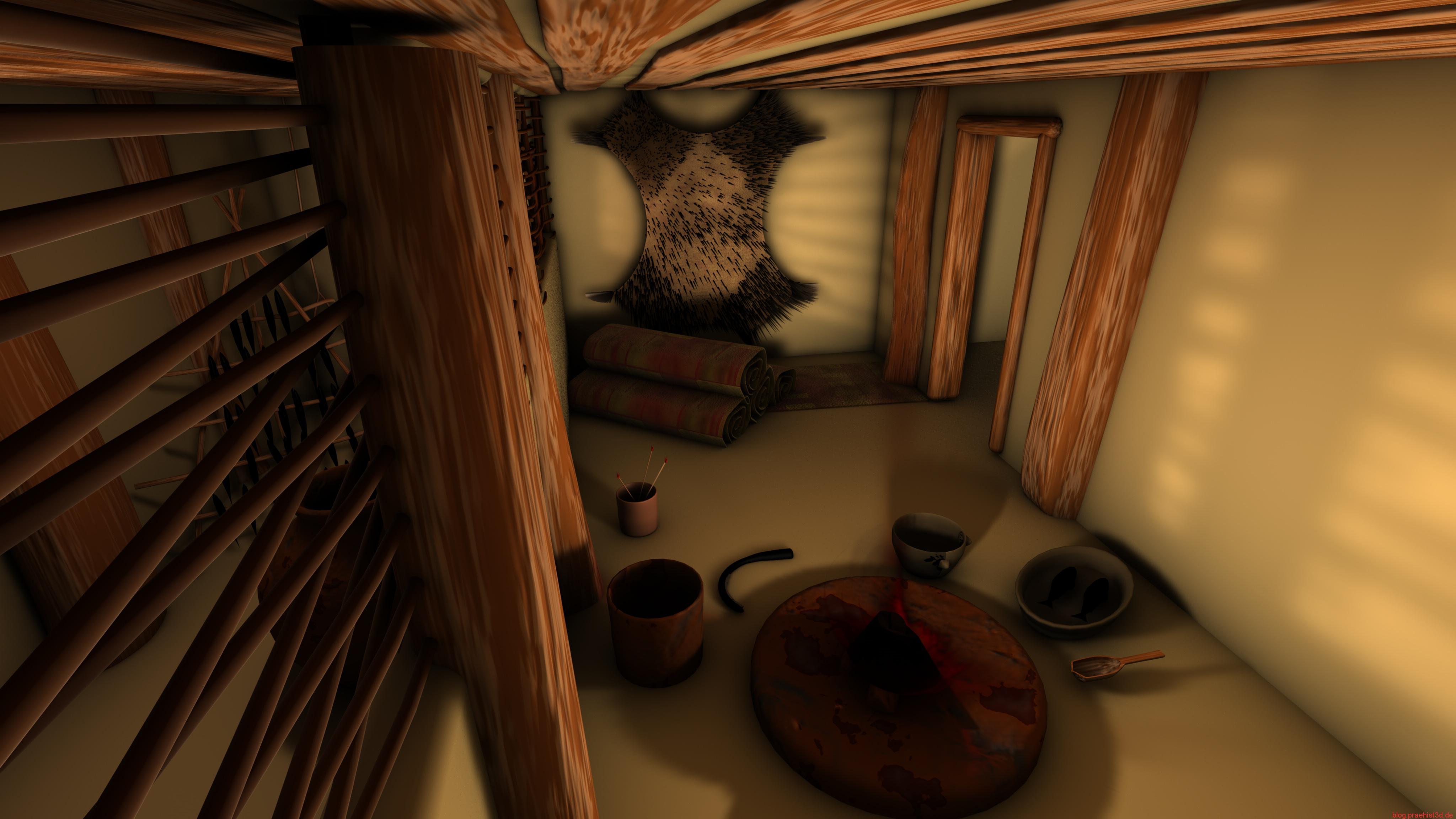
Finally, I would like to stress once more that it is my hypothetical reconstruction, which represents only one of countless possibilities.
Kontakt aufnehmen:
Haben Sie Interesse an 3D-Scans, Drucken, Rekonstruktionen, Workshops oder Fragen? Dann melden Sie sich!
